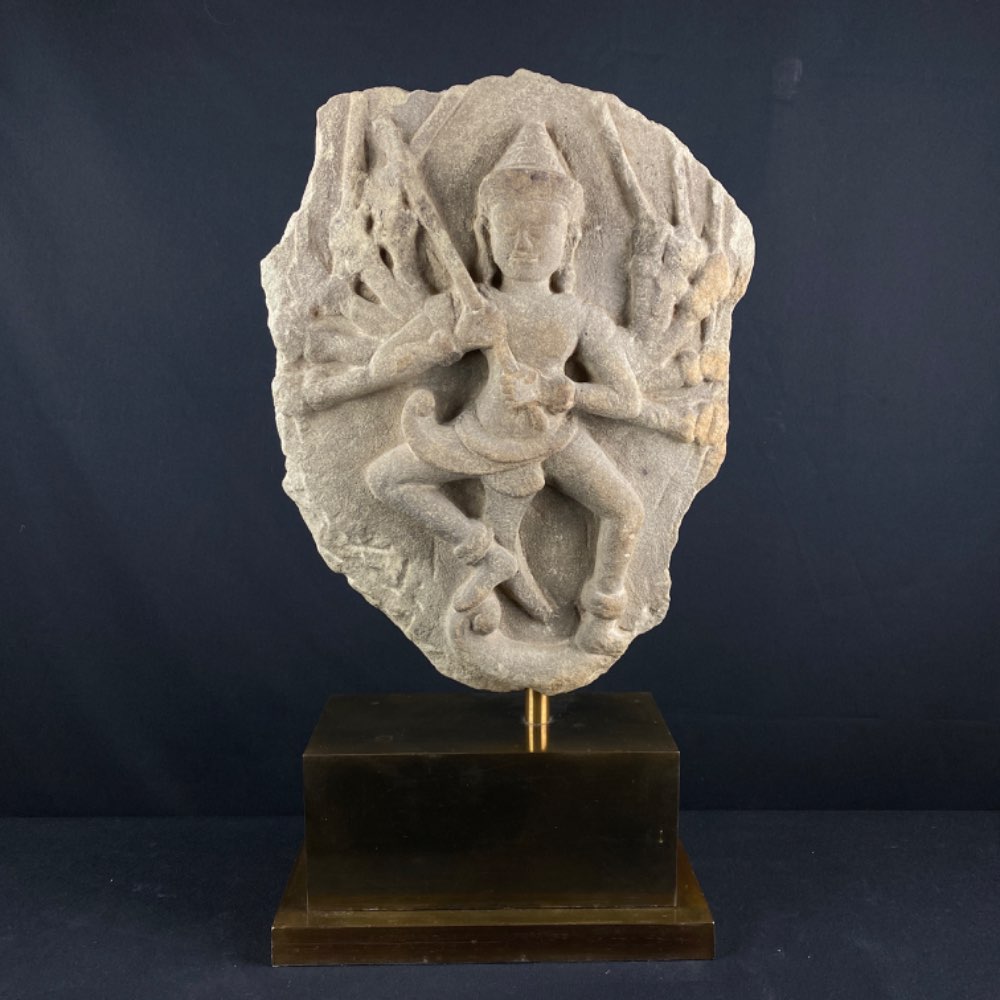

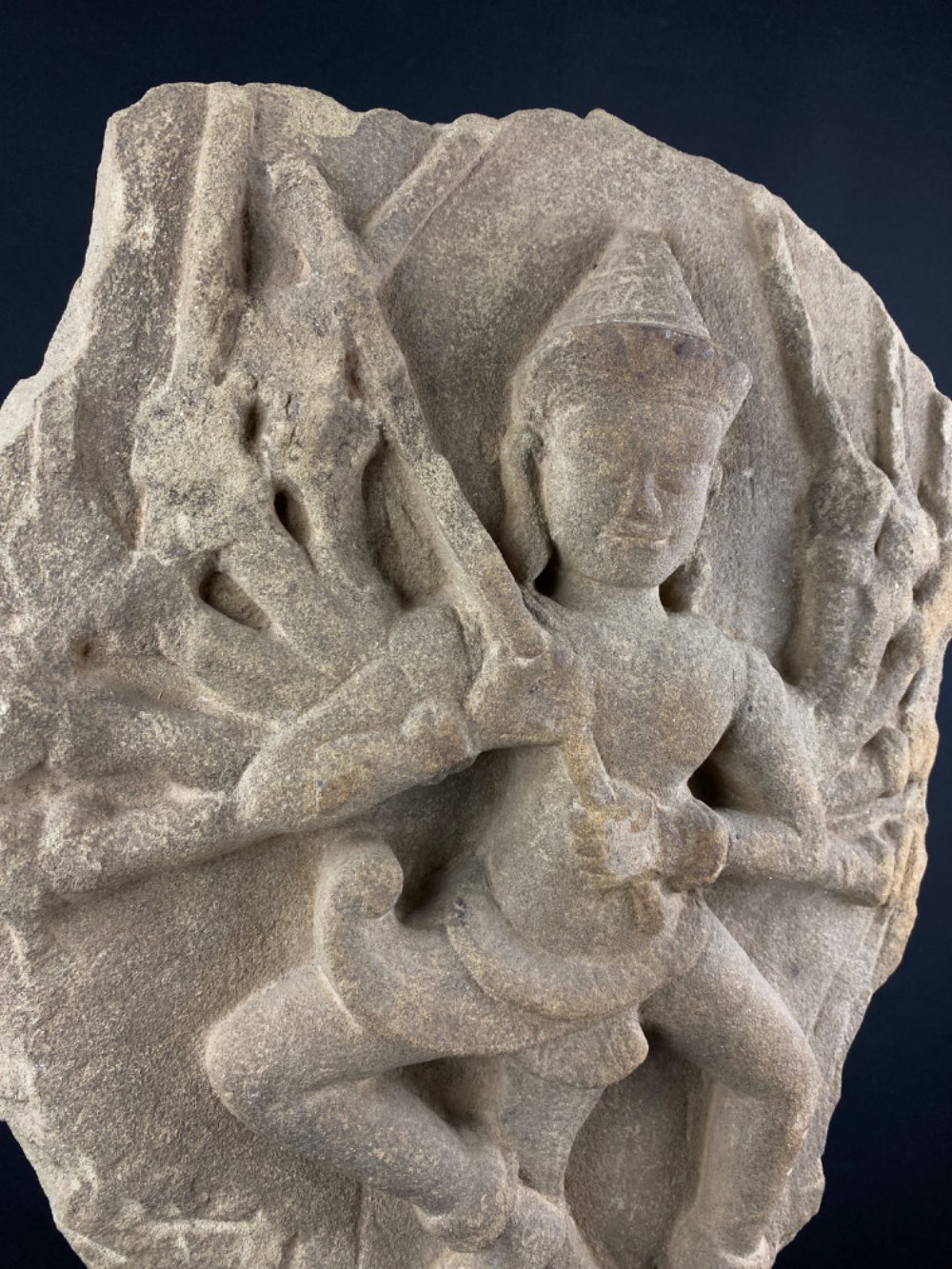
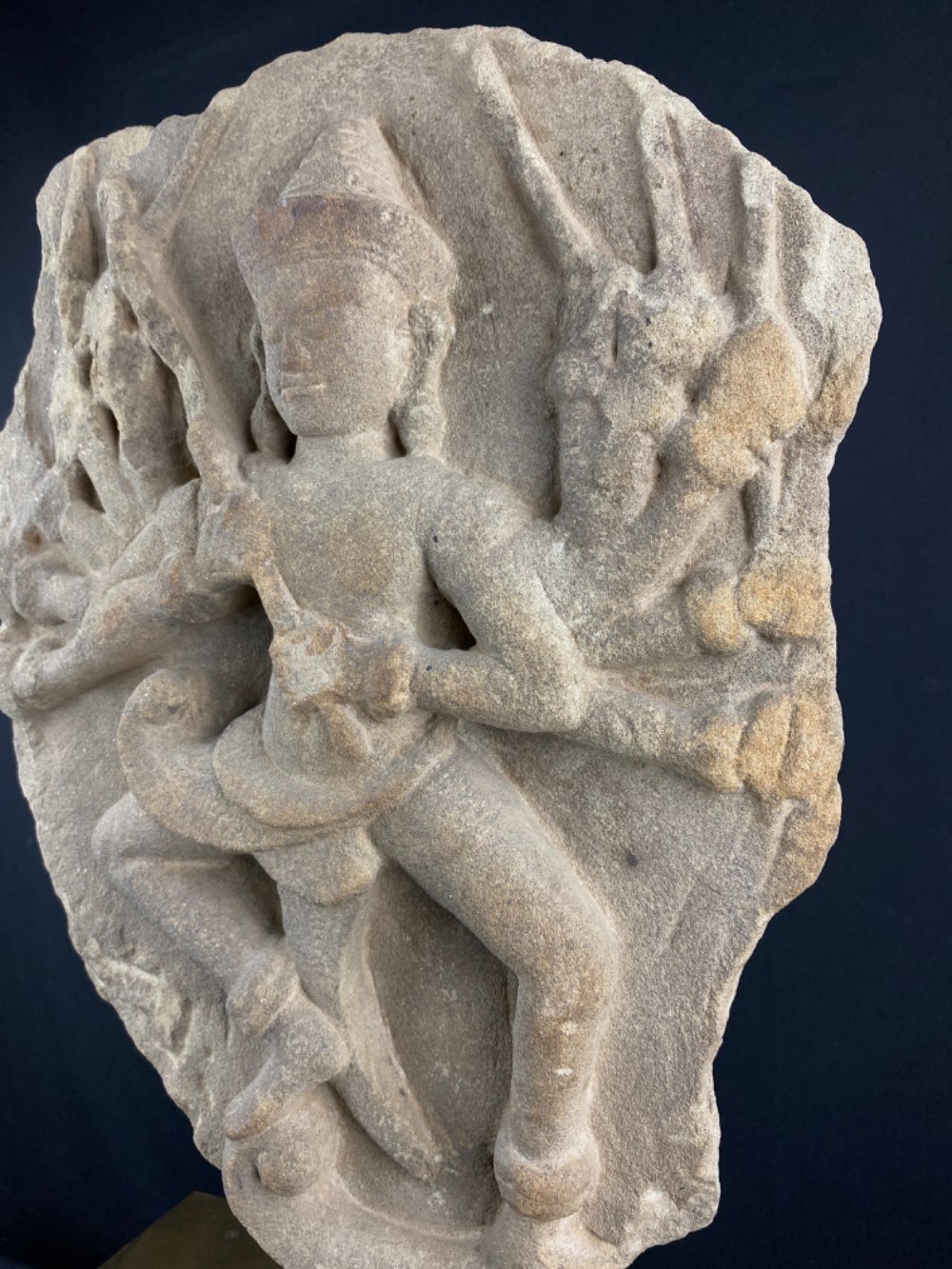
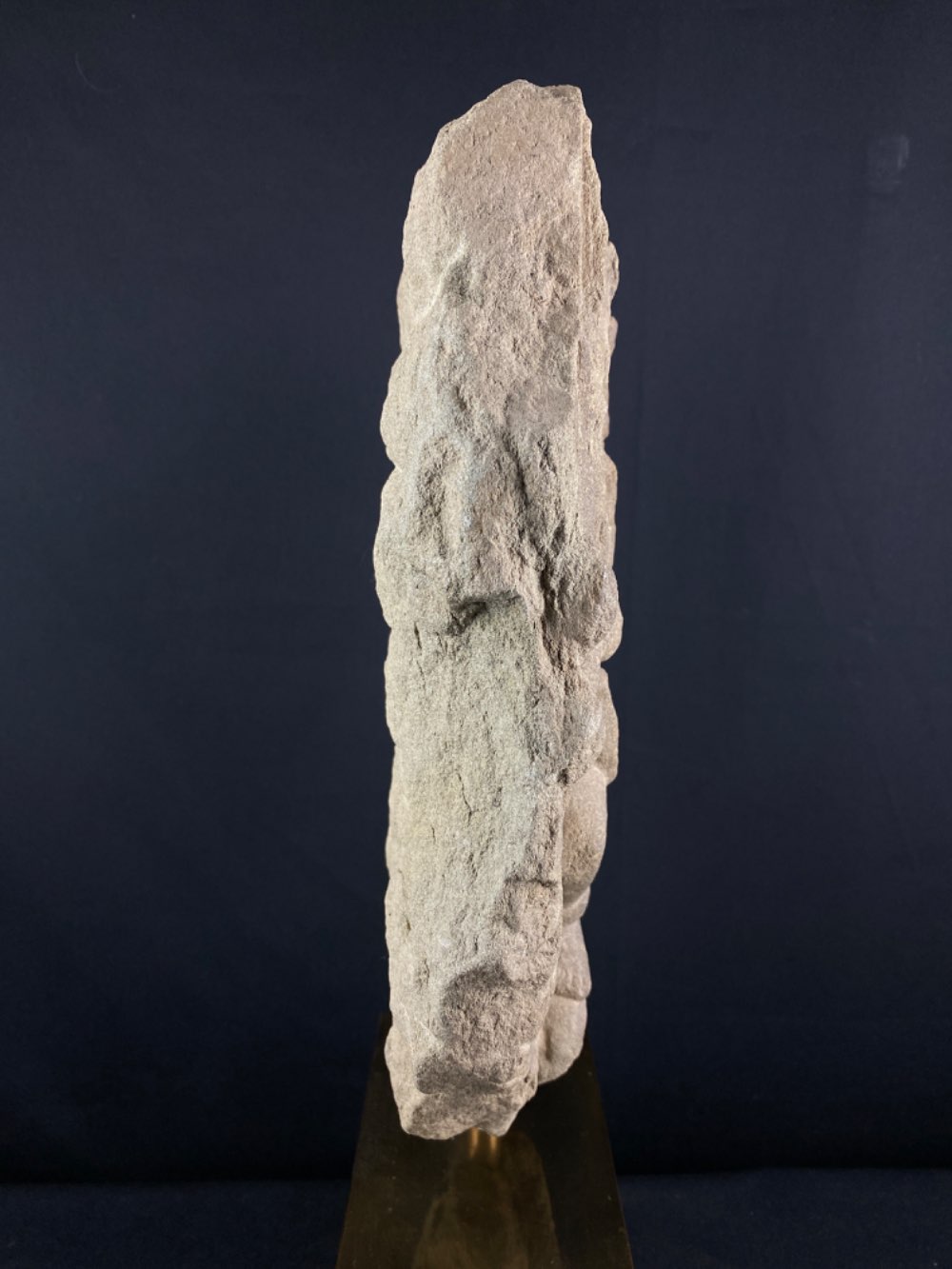
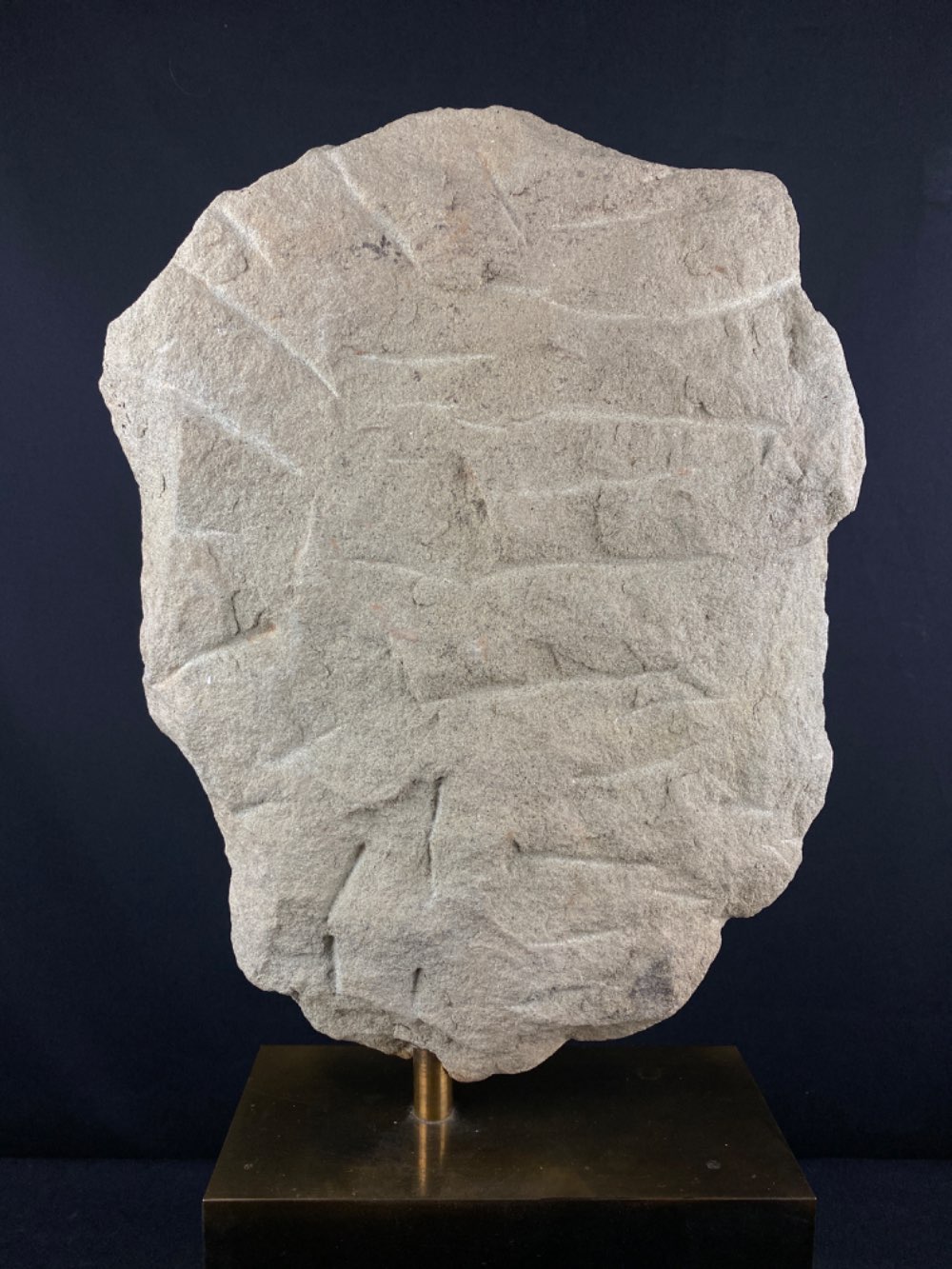
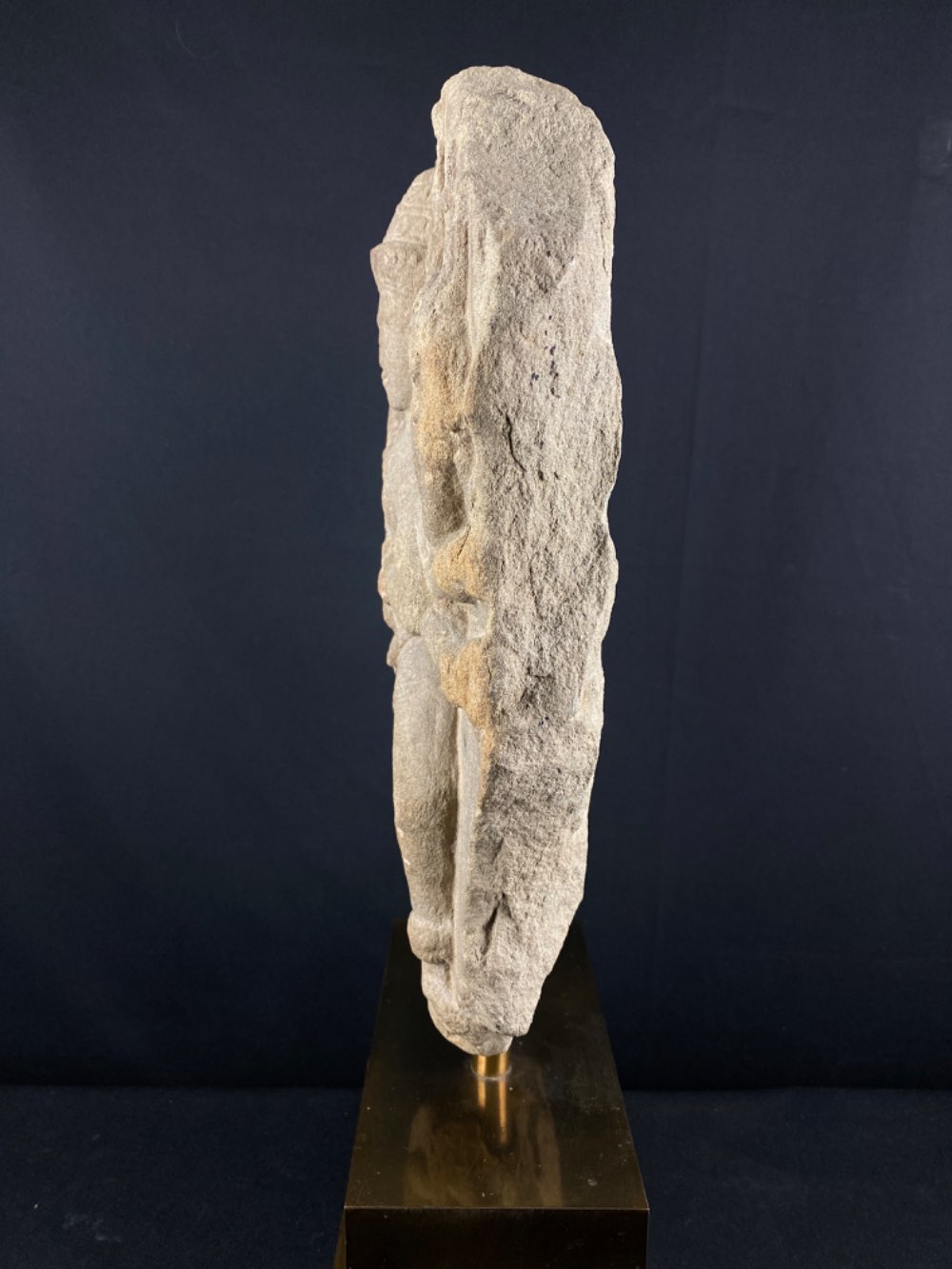
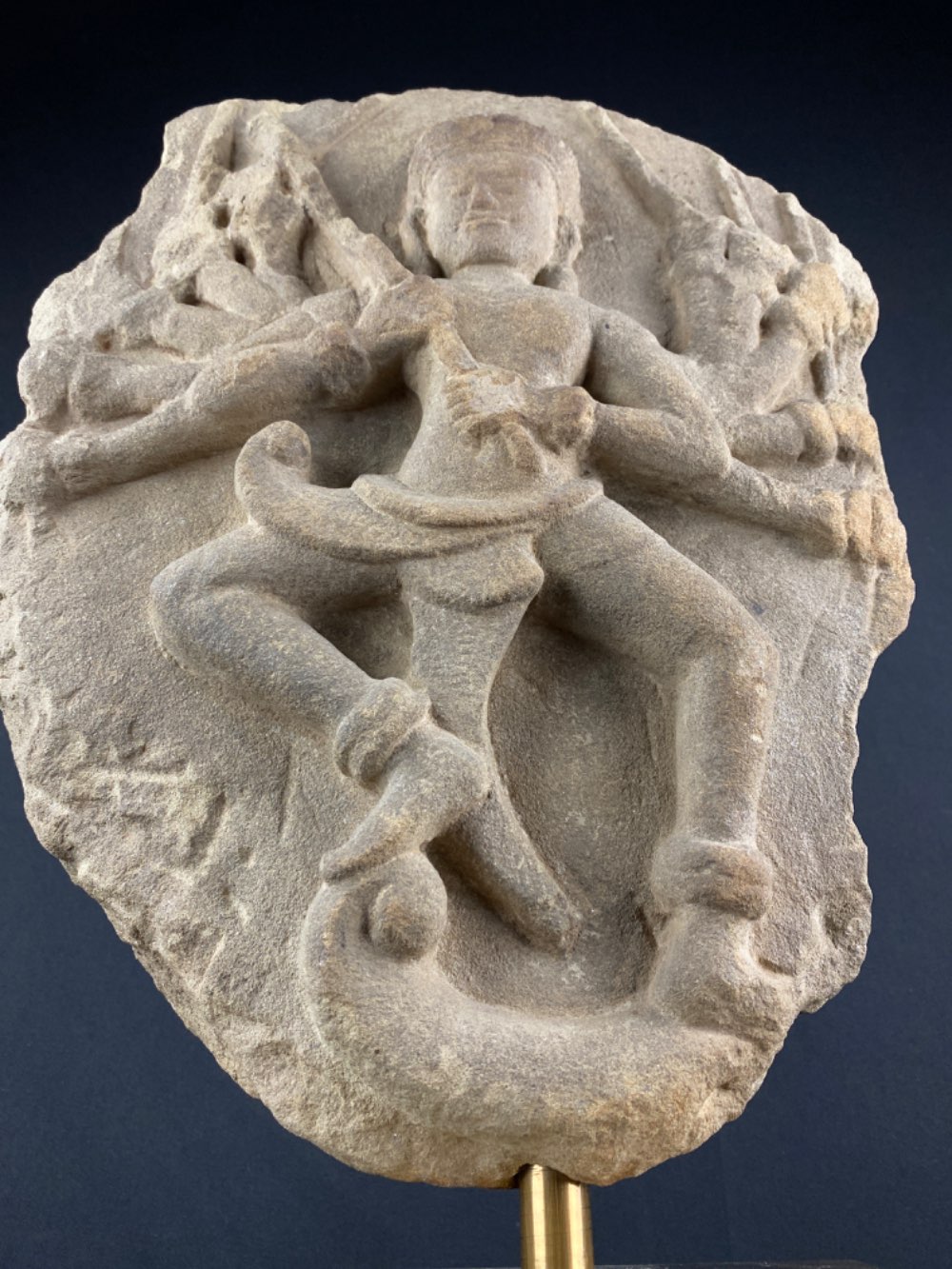
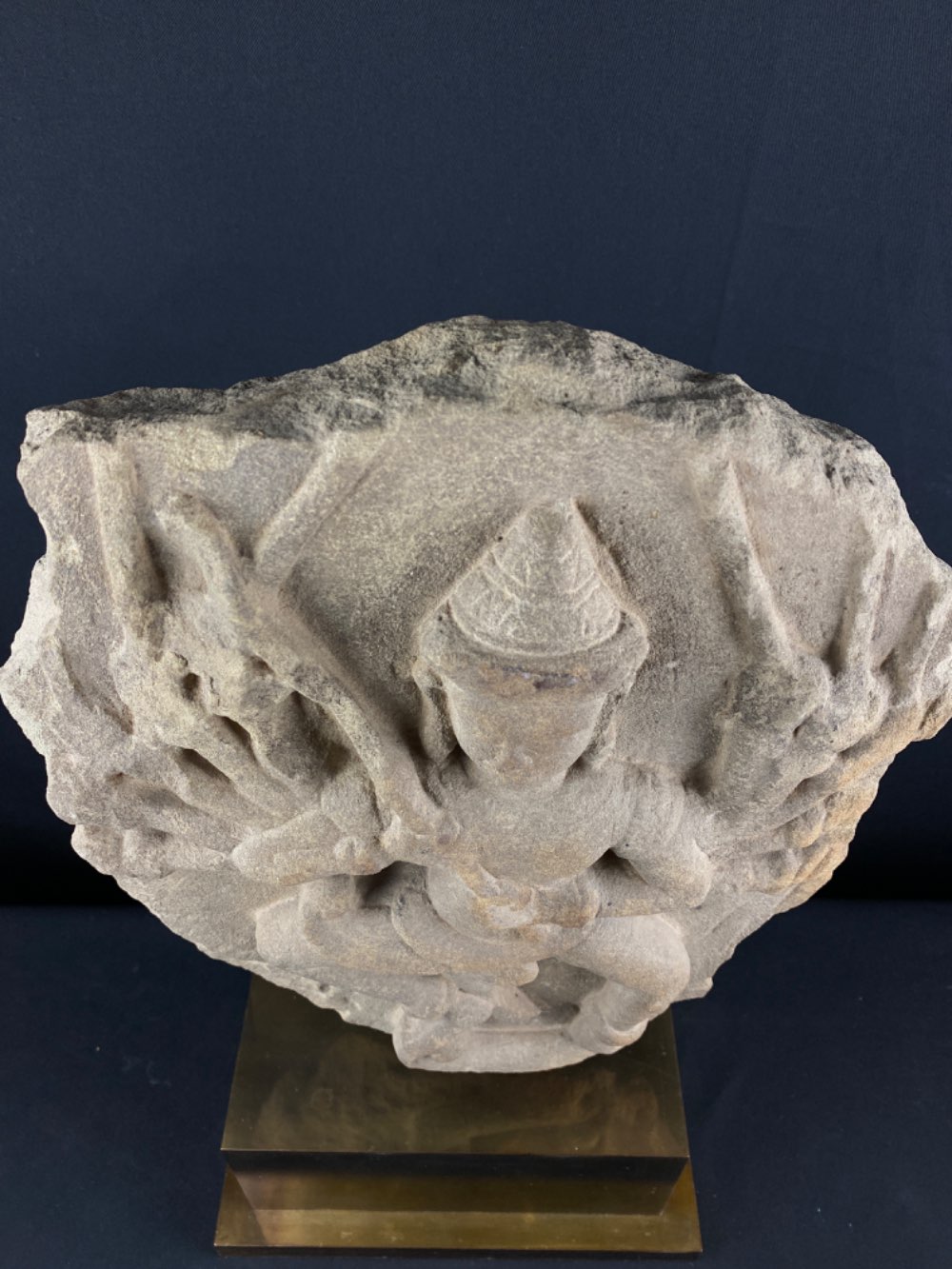
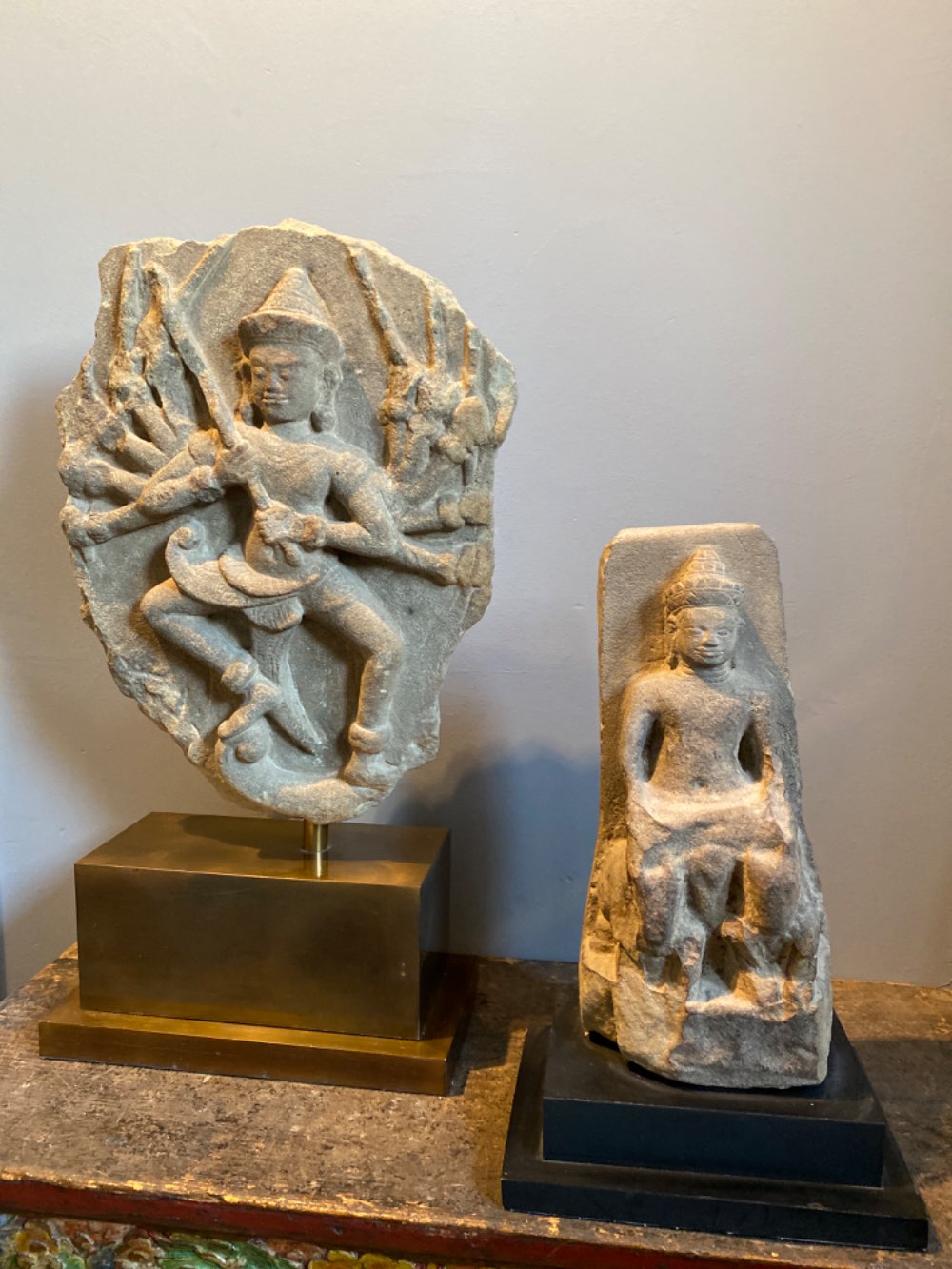
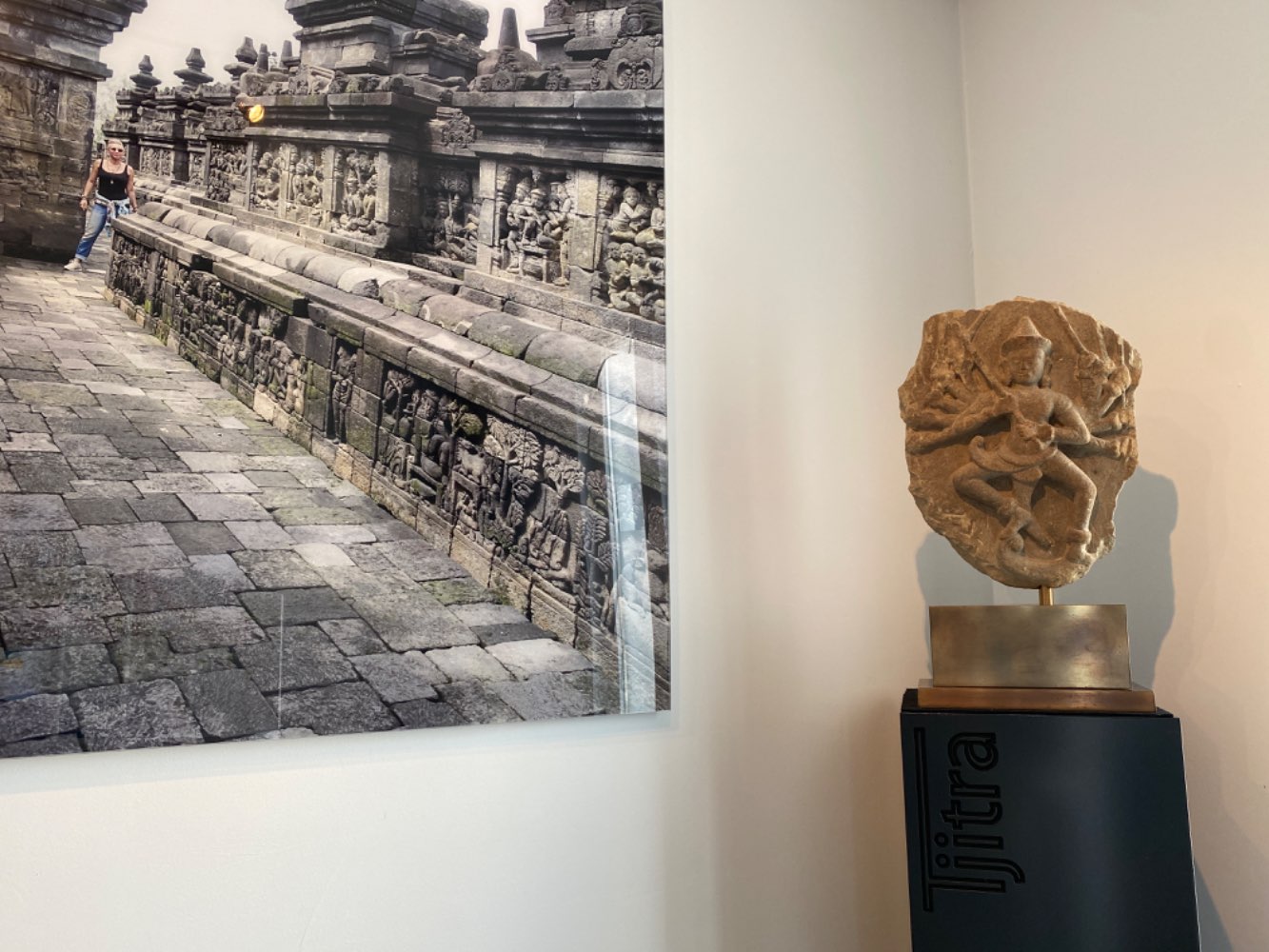
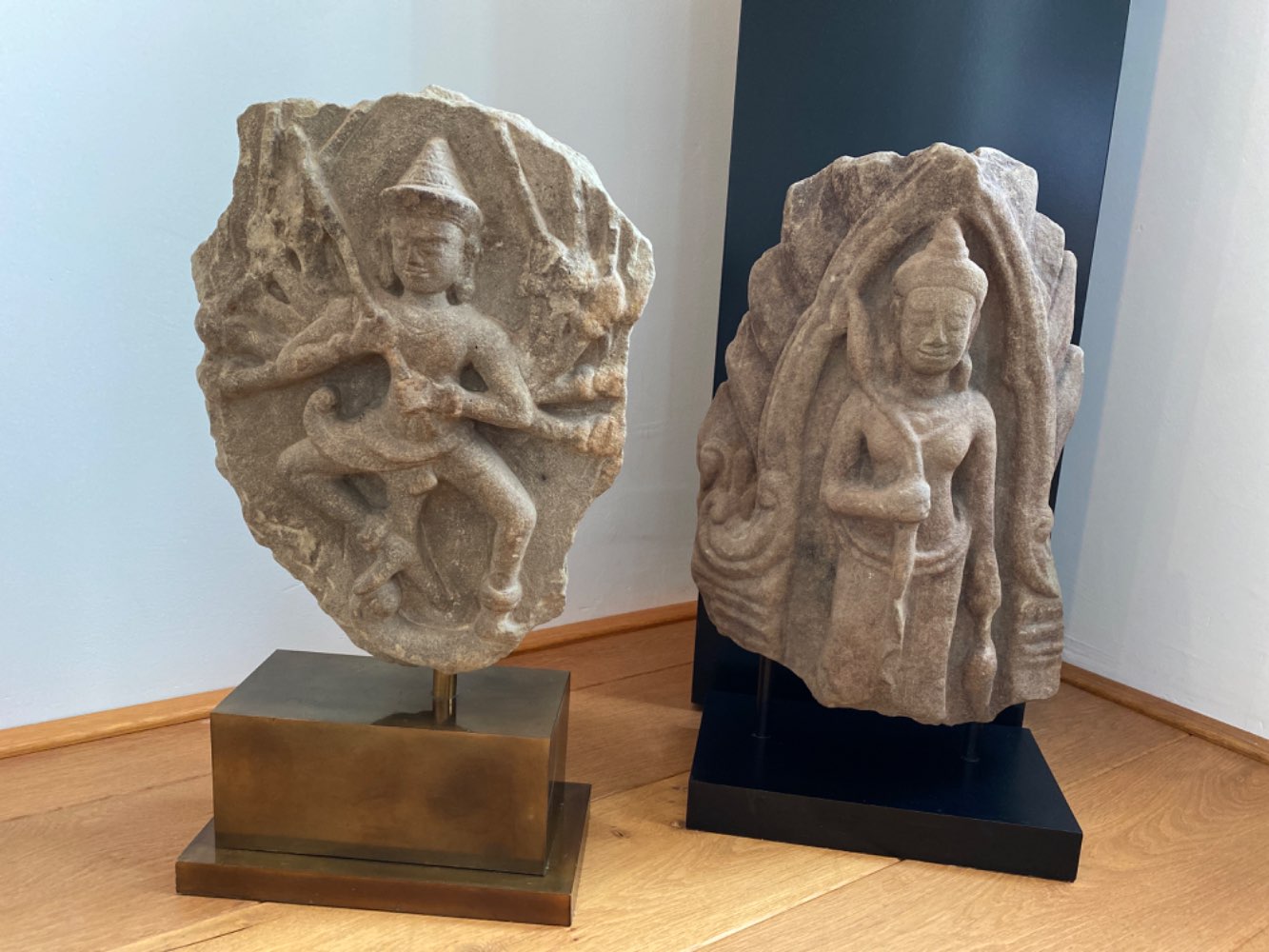
Beautiful Sandstone fragment of possibly Shiva from Cambodia, 12-13th century
Beautiful Sandstone fragment of possibly Shiva from Cambodia, 12-13th century
- Country: Cambodia, Khmer
- Period: 12-13th Century
- Material: Sandstone
- Size: 37 x 29 cm (51 cm incl. stand)
- On a custom made metal stand
- Very nice fragment of a trantric god, possibly Shiva Mahadeva with a total of 12 arms and holding a long object like a sword or septor in each hand.
- Fragment has good patina.
- Comes out of an old Dutch collection and was collected in the 1960's-1970's.
-
Shiva Mahadeva, also known as Lord Shiva, is one of the principal deities in Hinduism. He holds significant reverence and is considered the supreme god in Shaivism, one of the major traditions within Hinduism. Here's some information about Shiva Mahadeva:
-
Role and Attributes: Shiva is often depicted as the destroyer and transformer within the Hindu triumvirate, alongside Brahma (the creator) and Vishnu (the preserver). However, Shiva's role goes beyond destruction. He is associated with various aspects such as creation, preservation, fertility, meditation, and divine knowledge. He is also known as the "Lord of Dance" (Nataraja) and is associated with cosmic rhythm and cosmic order.
-
Iconography: Shiva is typically depicted with various distinguishing features. He is often portrayed with blue skin, representing his transcendence and association with the infinite. Shiva is often depicted wearing a crescent moon on his matted hair (jata), symbolizing the cycles of creation and destruction. He is also depicted with a third eye on his forehead, signifying spiritual insight and wisdom. In his hands, he carries various objects such as a trident (trishula), a drum (damaru), and a serpent (representing Kundalini energy). He is often shown seated in deep meditation or in a dancing pose.
-
Consort and Family: Shiva is married to Parvati (also known as Shakti or Devi), who is considered the divine feminine energy and the embodiment of power and devotion. Together, they have two sons—Ganesha, the elephant-headed deity, and Kartikeya, the warrior god. Shiva's family represents various aspects of divine energy and cosmic forces.
-
Worship and Festivals: Shiva is widely worshiped by devotees across different regions and cultures. Devotees often offer prayers, perform rituals, chant mantras, and make offerings to seek his blessings and guidance. The most prominent festival dedicated to Shiva is Maha Shivaratri, which is celebrated annually in honor of Lord Shiva's cosmic dance and his marriage to Parvati.
-
Symbolism and Philosophy: Shiva represents the transcendental and formless aspect of divinity, known as Brahman, while also embodying various attributes and forms. His mythology and symbolism hold deep philosophical meanings and teachings, emphasizing the cycles of life, death, and rebirth, as well as the pursuit of spiritual liberation and transcendence.
Shiva Mahadeva's significance extends across multiple dimensions, including religion, mythology, philosophy, and cultural expressions. He is revered as a powerful deity embodying both destruction and creation, and his worship has played a vital role in shaping Hindu traditions and spirituality.
-
Please send an e-mail via below form, WhatsApp or call to order or get more information about this object.
We can communicate in English, Deutsch and Nederlands!
 A unique sandstone Buddha sitting on 2 animals from Bakheng, Cambodia
A unique sandstone Buddha sitting on 2 animals from Bakheng, Cambodia Very nice Sandstone fragment of an Apsara from Cambodia, 12-13th century
Very nice Sandstone fragment of an Apsara from Cambodia, 12-13th century